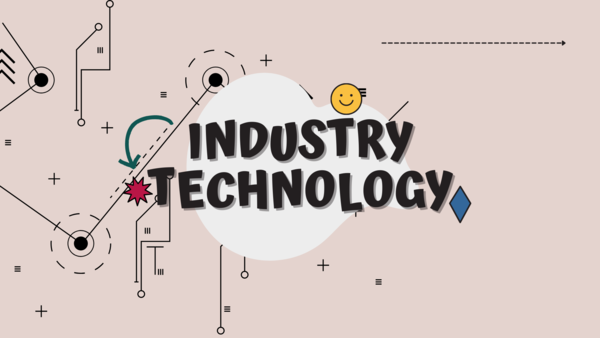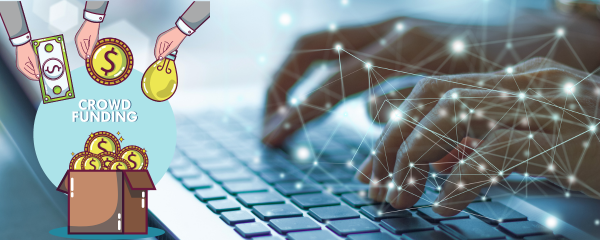Highlighting Industry Technology Updates

Highlighting Industry Technology Updates
The nonprofit sector in the United States represents a significant portion of the economy, contributing to the well-being of society and the environment. As such, the industry has undergone many changes in recent years, with new technologies and policies affecting how charities operate. This article will cover the most notable highlights and industry news in the US nonprofit/charity sector in recent years.
Technology has revolutionized the way nonprofit organizations operate, from fundraising to outreach and public relations. One of the most significant advancements in technology is the use of social media for advocacy and fundraising. Most nonprofits have a social media presence, utilizing platforms such as Facebook, Twitter, Instagram, and LinkedIn to communicate with their supporters, share their mission, and raise funds. In recent years, crowdfunding has emerged as another critical technology for the nonprofit sector. Crowdfunding platforms like Kickstarter and GoFundMe have enabled nonprofit organizations to raise money through online donations from supporters around the world. Social media has had an immense impact on society, transforming the way people interact with one another and access information. Media platforms have become essential tools for promoting the public's awareness of social issues, fundraising, and creating social change. These platforms have enabled nonprofits to reach their audience in more intimate and accessible ways. It has also allowed nonprofit organizations to create a presence that is accessible to all users, including those who may not have been aware of the organization's work previously. By creating a search engine-optimized website and social media profiles, nonprofits have greater visibility and can reach a wider audience.

Social media has also enabled nonprofits to engage with their supporters and promote meaningful conversations with those who are interested in their work. They can post updates and stories, sharing the impact they are making and the goals they are working towards. Through social media outreach, nonprofits can create impactful storytelling and highlight the impact of their work. This storytelling creates an emotional connection between the donor and the charity and inspires donors to give. It has also made it possible for nonprofits to target a specific audience. For instance, nonprofits can use Facebook's ad platform to target people who are interested in their cause or those who live in a particular location. They can also create a video or image that targets users interested in specific activities or hobbies. It enables nonprofits to establish relationships with donors and supporters. Nonprofits can engage and interact with donors through social media channels such as LinkedIn, Twitter, and Facebook. Responding to comments and messages on social media platforms helps to build trust with supporters and demonstrates that the organization is listening to and valuing its donors. Through social media, it is possible for nonprofits to organize events, help fundraisers and conquer goals. They can create and promote events through social media channels, post photos and videos of the event, and update their supporters with real-time information. Nonprofits can also use social media to promote fundraising events, supporter appeals, and giving options. Overall, social media has provided nonprofits with a new and effective way to connect with their audience, raise awareness, and promote their cause.

Crowdfunding has become increasingly integral to the work of nonprofit organizations. Crowdfunding provides a way for nonprofits to engage with their supporters by encouraging them to donate directly to a specific project or campaign. The platforms help to raise funds for a project by allowing people to donate money directly to it. Crowdfunding is popular because it allows nonprofits to leverage the power of social networks to raise funds for a cause. These platforms provide organizations with a way to pool resources and enable crowdfunding through social media channels. This means that organizations can reach a wider audience and engage more donors to contribute to their campaigns. By using crowdfunding, nonprofits can also reach audiences that may not have otherwise been compelled to donate. Nonprofit organizations have used crowdfunding to fund their projects, campaigns, and initiatives. For example, a nonprofit may launch a crowdfunding campaign to fund a specific program, equipment needs, or to sponsor an event. Crowdfunding can also be used to support members of a community affected by a disaster, such as flooding or hurricanes. It has also become a significant method for nonprofits to raise funds for their operational needs. Often, when nonprofits crowdfund, they resort to more straightforward, more focused campaigns. These campaigns seek to raise exact amounts of money for a specific need. Nonprofits can use crowdfunding directly to raise funds for specific events or campaign advertisements. Moreover, by running crowdfunding campaigns, nonprofits can learn more about what their audience is interested in and tailor their messaging accordingly. Crowdfunding platforms can provide nonprofits with valuable data about donor behavior and preferences, which can inform future campaigns.

Another noteworthy technological advancement for charity organizations is the use of artificial intelligence (AI) tools, machine learning, and data analytics to streamline operations, improve decision-making, and increase efficiency. For instance, AI-based tools can help nonprofits in identifying donor trends, analyzing fundraising campaigns, and making strategic decisions accordingly. Organizations have been exploring the potential for using data analysis, predictive modeling, and automation to enhance their operations and achieve their objectives more efficiently. AI applications have gained widespread adoption in various industries in recent years, revolutionizing traditional workflows, and enhancing productivity. The non-profit/charity sector has also started to leverage the benefits of AI, and experts predict that its impact will only increase in the coming years. These advancements in AI have created new opportunities for organizations seeking to improve their operations and gain a competitive edge. This technology finds application in a wide range of areas, from data analysis to customer service and fundraising. At DonationX, utilizing our ChairtyAI service can aid any nonprofit in finding areas in which they are doing well, and target areas in which to improve.
Fundraising is a critical area for charities and non-profits. However, many organizations struggle to raise sufficient funds to support their programs and initiatives. It has become increasingly difficult for charities to compete for the available funds, and traditional fundraising techniques often fail to deliver the desired results. AI-based solutions may offer a solution to this problem. These tools can help non-profits to identify potential donors, analyze data to determine the most effective fundraising channels, and develop personalized communications based on their donors’ preferences and interests. For example, charities and non-profits can use AI-based tools to segment their donors based on their demographics, behaviors, and donations history. These insights enable organizations to create targeted campaigns that resonate better with their supporters and drive higher engagement rates. Another area where AI can be useful for fundraising is predicting donors’ actions. AI algorithms can analyze donors’ data in real-time to identify donors who are most likely to contribute to specific campaigns, as well as those who are unlikely to donate. This information can help organizations to fine-tune their strategies and prioritize their outreach efforts more effectively.

Charities and non-profits face numerous operational challenges, from managing their resources to ensuring the effective delivery of their programs. AI can help organizations to streamline their operations and improve their efficiency. One area where AI can be used to improve operational efficiency is in the recruitment and management of volunteers. Charities and non-profits rely heavily on volunteers to keep their operations running smoothly. However, volunteer recruitment and management are complex processes that require significant time and resources. AI tools can help organizations to automate tasks such as screening potential volunteers, matching them to suitable opportunities, and tracking their hours. This automation reduces the administrative workload on staff, enabling them to focus on more strategic tasks such as building relationships with donors and developing fundraising campaigns. Another area where AI can improve operational efficiency is in program delivery. Charities and non-profits must deliver their programs effectively and efficiently to meet their beneficiaries’ needs. AI-based solutions can help organizations to monitor program metrics, track progress, and identify areas for improvement.

Data analysis is an essential function for charities and non-profits. Organizations need to track their performance metrics, analyze their results, and use insights to guide their decision-making. However, data analysis can be complex, time-consuming, and resource-intensive, especially for smaller organizations with limited staff and resources. AI technologies can help organizations to automate many aspects of data analysis and leverage their data more effectively. AI-based tools can analyze data more efficiently than human analysts, enabling organizations to gain insights and make decisions more quickly. For example, an AI predictive model can analyze data to identify the factors that influence donor behavior, anticipate donor preferences, and predict their future actions with great accuracy. Obtaining these predictions improve the effectiveness of fundraising, with more accurate and informed predictions, such as the best ways to personalize communication campaigns with specific donors to increase engagement and donations.
Utilizing artificial intelligence (AI) in the charity/nonprofit sector can bring numerous benefits. AI can help organizations automate time-consuming tasks such as fundraising, data analysis, and outreach efforts. This can allow charities to focus more on their core mission and maximize the impact of their programs. Additionally, AI can help organizations make better decisions by analyzing large amounts of data, identifying trends and patterns, and providing insights that can aid in strategy development. Moreover, AI can enhance donor engagement and stewardship by providing personalized communication and engagement strategies. Ultimately, AI can enable charities and nonprofits to operate more efficiently, improve fundraising efforts, and make a greater impact on the communities they serve.
CSRMaximize Your CSR and Social Impact Programs
DonationXchange robust philanthropy management software helps you streamline administrative tasks and maximize the impact of your donation dollars!
Watch the video:
How DonationXchange Can Help:
• Create & Track Fundraisers, Scholarships, Grants & More!
• Manage & Grow Donor Base
• Process, Track, and Analyze Donation Requests
• Manage Volunteer Opportunities
• Supercharge Employee Engagement
• Champion the Causes that Matter to YOU!
Schedule a demo today!